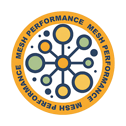Can Dietary Fibre Help Reverse Fatty Liver? The Gut-Liver Link Explained
Discover how fibre-rich foods can improve liver health in MASLD by reducing inflammation, insulin resistance and gut-liver axis disruption.
Bally Parekh MSc RD
6/9/20253 min read
What Is the Role of Dietary Fibre in MASLD?
If there’s a single dietary change I wish every person with fatty liver would commit to, it’s this: eat more fibre. Not because it sounds like a wellness cliché, but because fibre impacts nearly every biological mechanism driving MASLD.
From managing blood sugar to repairing the gut barrier, fibre is a quiet overachiever. It’s not just about what you don’t eat (like fructose), it’s about what you add in.
How Does Fibre Improve Metabolic Health?
Fibre slows down the digestion of carbohydrates, which leads to:
Reduced glucose spikes
Lower insulin secretion
Improved insulin sensitivity
For clients in clinic, this often translates to fewer energy crashes and better control of post-meal fatigue or cravings, subtle signs that the metabolic tide is turning.
Data point:
Higher dietary fibre intake has been associated with a 20–30% reduction in insulin resistance markers, even independent of weight loss.
How Does Fibre Affect the Gut-Liver Axis?
Fibre is fermented by your gut microbes into short-chain fatty acids (SCFAs) like butyrate and propionate. These SCFAs:
Nourish gut cells
Reinforce gut lining integrity (reducing “leaky gut”)
Help regulate systemic immune responses
Lower circulating levels of endotoxins like lipopolysaccharides (LPS), which are otherwise delivered to the liver and trigger inflammation.
This connection is known as the gut-liver axis, and it’s a central pathway in MASLD progression. When the gut barrier weakens, liver inflammation worsens—and that’s where fibre steps in.
FAQ:
What Types of Fibre Should I Eat for Liver Health?
The key is variety. Different fibres fuel different species of gut bacteria. Focus on:
Soluble fibre: oats, legumes, flaxseed, barley, apples
Insoluble fibre: whole grains, leafy greens, nuts, broccoli
Resistant starch: cooked-cooled potato, green bananas, lentils, oat.
Aim for 25–35g/day, depending on energy needs and tolerance.
FAQ:
Can Fibre Help with Weight Loss in MASLD?
Absolutely and not just through calorie control. Fibre enhances satiety, slows digestion, and supports blood sugar stability. But more importantly, it changes body composition. Clients often focus on BMI, but what really matters is preserving or building lean muscle while improving metabolic markers.
What I See in Clinic: Under-Fibred, Over-Snacked
It’s not uncommon for new clients to believe they’re “eating healthy” because they’ve cut sugar or carbs, yet fibre intake is under 15g per day. This is often the missing piece.
Once we layer in legumes, vegetables, and whole plant foods, not fibre supplements, they not only hit their target but often notice improvements in energy, digestion, and even skin within weeks.
Why This Matters for Your Long-Term Liver Health
Fibre won’t make headlines like keto or supplements, but it’s foundational. And the impact of 30g a day isn’t just theoretical, it’s measurable. Better gut health. Reduced liver inflammation. Improved insulin sensitivity.
And yes, your microbiome will thank you, likely in the form of better moods, less bloating, and metabolic resilience. Not a bad return for some beans and oats.
If you’re unsure where to start, or feel overwhelmed by bloating or food fear, working with a specialist liver dietitian can help personalise your fibre strategy. From gut tolerance to glucose stability, we’ll design a plan that works with your body.
How can I help you?
If you’d like expert, tailored support, book a consultation today at The Liver Nutrition Clinic. I’m Bally Parekh, MSc RD, Specialist Liver Dietitian, and I’d love to help you stay stronger for longer.
How can we help
At MESH Performance, Specialist Liver Dietitian Bally Parekh MSc. RD provides evidence-based nutrition support for those living with liver conditions. Our approach focuses on:
Sarcopenia and frailty assessments
Maintaining and rebuilding muscle to reduce the risk of frailty and malnutrition
Implementing targeted dietary strategies to support overall well-being and quality of life
Optimising nutrition to prevent deficiencies and support energy level
Managing a liver condition comes with challenges, but the right nutrition can make a real difference. We're here to provide practical support—let’s get started.


Our Instagram
Get in touch
info@mesh-performance.com



